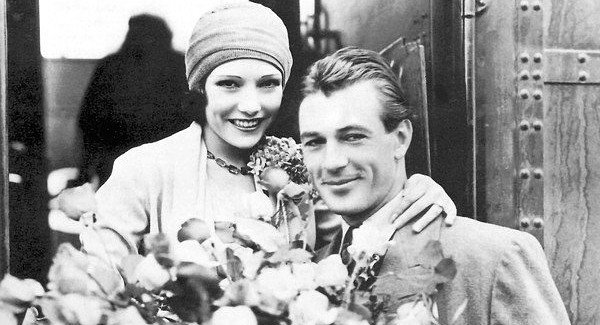Lupe Velez was a dynamo whose talent popped off the screen. The Mexican-born beauty, who came to fame in Douglas Fairbanks’ 1927 adventure, “The Gaucho,” could do anything — comedy, musicals, drama.
And she could hold her own with the biggest stars, including the classic comedy team of Stan Laurel and Oliver Hardy. In the 1934 musical comedy “Hollywood Party,” Velez manages to steal a slapstick scene with the duo that involves breaking eggs.
“The thing I really enjoy about Lupe Velez is the sheer joy she takes in performing — you don’t often seen that,” said film historian Richard Barrios, author of “A Song in the Dark: The Birth of the Musical Film.” “She is loving what she’s doing and she knows she’s making people happy. You see that radiating from her.”
Velez may have paved the way for Latino actresses who followed her in Hollywood, but her career ended tragically.
The tempestuous Velez had numerous affairs, including a particularly torrid one with a young Gary Cooper, and a tumultuous marriage to “Tarzan” star Johnny Weissmuller. But in 1944, at age 36, she found herself pregnant with the child of a little known-actor name Harald Maresch, who would not marry her. A Catholic, Velez wouldn’t have an abortion, but she also couldn’t handle the shame of being pregnant and unmarried. She wrote a suicide note to Maresch and took 80 Seconal pills. Velez was discovered by her secretary in her bed surrounded by flowers.
Her death took a sordid spin some 40 years ago when Kenneth Anger proclaimed in his controversial book “Hollywood Babylon” that Velez had in fact been found drowned with her head in the toilet, and that account took hold as a salacious urban legend. Velez has even been the butt of jokes on the NBC sitcom “Frasier” and Fox’s animated”The Simpsons.”
Australian writer Michelle Vogel dispels the myths surrounding Velez in her new book, “Lupe Velez: The Life and Career of Hollywood’s ‘Mexican Spitfire.'”
“Lupe Velez was a very complex person,” Vogel said in an email interview. “She was, most likely, undiagnosed bipolar. Hollywood, with all of its luxuries and trappings, only served to heighten her personality. She was always manic, extremely high-strung. As a result of her moods, she had knock-down, drag-out fights with the men in her life, and even with some of her female costars.”
The actress, Vogel said, “had no filter, and in those days, when studios expected their stars to convey a public image that was respectable, Lupe Velez said what she thought, often without thinking about the repercussions.”
Vogel believes Velez’s bipolar disorder may have played on her suicide. “Her hormones would have been raging because of the pregnancy, no doubt setting off thoughts and feelings that were once again exasperated further by her mental illness.”
“I think she could have gotten away with her personal life if she had better guidance,” said Cari Beauchamp, author of “Without Lying Down: Frances Marion and the Powerful Women of Early Hollywood.” “It doesn’t have to be a mother, but a strong figure who can look them in the eye and say ‘no’ and help take care of other aspects of their life.”
Velez’s heyday was the early 1930s, when her saucy persona was a perfect fit with the sexually open pre-code movies such as 1932’s “Kongo” and “The Half-Naked Truth.”
“She did the Mae West thing, which is to say pushing the boundaries of what you could do or say in a film at a time when Hollywood was trying to police itself,” said Charles Ramírez Berg, professor of media studies at the University of Texas at Austin and author of “Latino Images in Film.”
But when Hollywood’s production code was enforced in 1934, Velez struggled. She appeared in forgettable “B” movies, returned to Mexico for a film and did a short-lived Broadway musical. She starred from 1939-43 in the popular RKO “Mexican Spitfire” comedy movie series, in which she played Carmelita, a stereotypical Latina who spoke in a heavily accented “Spanglish” that was peppered with malapropisms.
Still, said Berg, she made the most out of the role, proving she was a great physical comedian. Velez also managed to ad-lib some lines in Spanish in the films.
“It was just a couple of sentences, but what she is doing is talking to us Latinos in the audience, in a way winking at us and making us part of the film’s conversation in a real interesting way,” he said.


